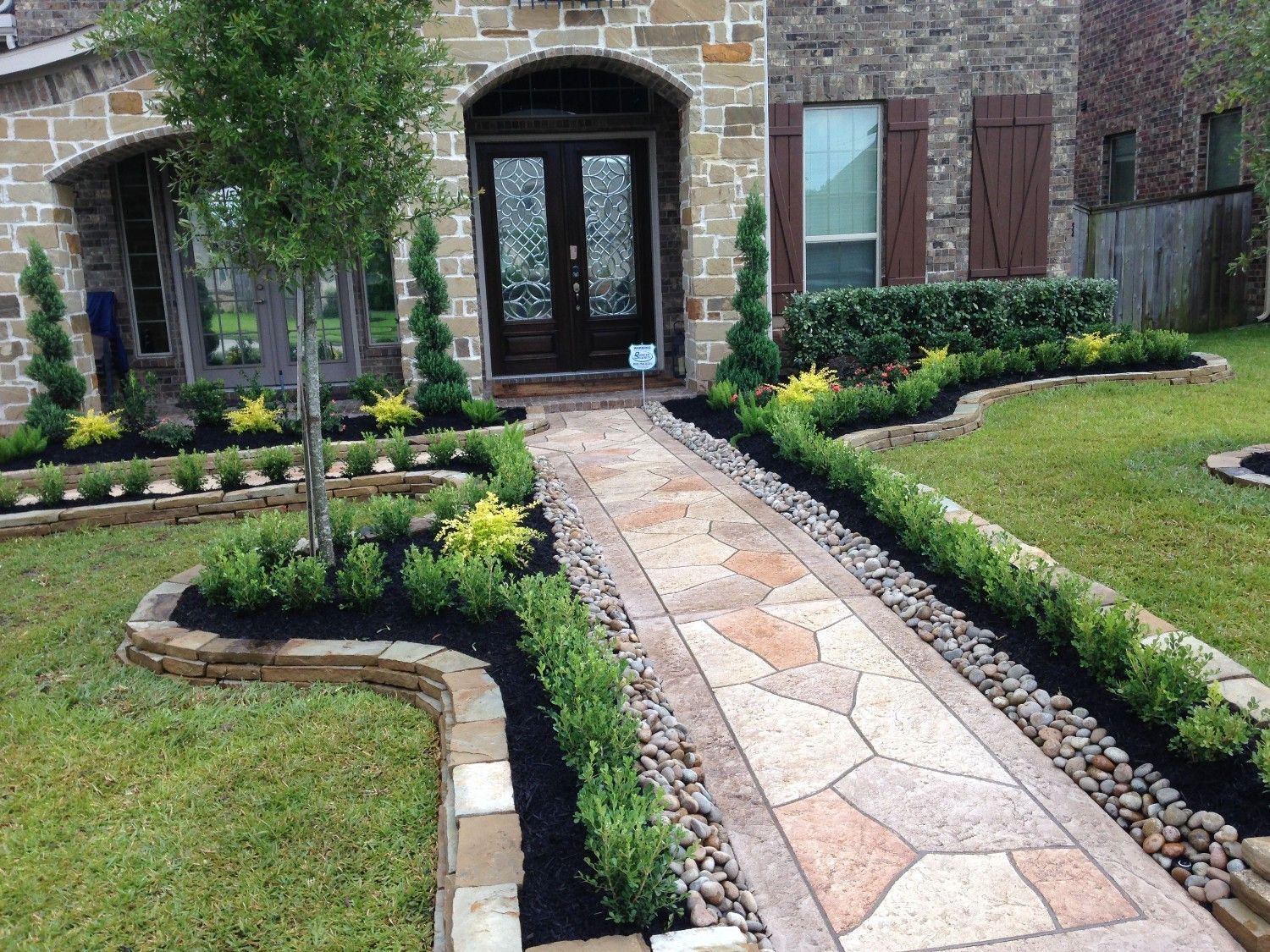When it comes to home landscaping, one of the most overlooked areas is the front walkway. Not only does this pathway provide essential access to your home, but it also plays a crucial role in enhancing your property’s curb appeal. A well-designed front walkway can make a lasting first impression, inviting guests and setting the tone for the rest of your outdoor space.
In this article, we will explore key landscape design principles for front walkways. We’ll cover materials, layout ideas, and landscaping tips, all aimed at creating a functional and visually appealing entrance to your home.
Why Front Walkways Matter in Landscape Design
Your front walkway is more than just a path to your door. It is an integral part of your home’s overall aesthetic and landscaping scheme. Here are a few reasons why investing in a well-planned front walkway is essential:
- Curb Appeal: A stylish walkway can significantly increase the curb appeal of your home, improving its visual appeal from the street.
- First Impressions: It’s the first thing visitors see when they approach your house. A well-maintained, attractive walkway sets the tone for the rest of your outdoor space.
- Functionality: A front walkway serves a practical function, providing a safe and easy route to your home while helping to prevent wear and tear on your lawn.
- Value Boost: A beautifully designed front walkway can also increase the value of your property, making it more attractive to potential buyers.
Choosing the Right Materials for Your Front Walkway
1. Pavers: Classic and Customizable
Pavers are one of the most popular materials for front walkways. They are available in various shapes, sizes, and colors, allowing for versatile design options. From classic brick pavers to contemporary concrete options, the design possibilities are endless.
Benefits of Pavers:
- Easy to replace or repair.
- Provides a timeless look.
- Available in different textures and colors.
2. Flagstone: Natural Beauty and Elegance
Flagstone is another popular choice for front walkways, especially for those who want a more natural, rustic look. This stone is ideal for creating winding, organic pathways through gardens or lawns.
Benefits of Flagstone:
- Unique, natural appearance.
- Ideal for creating curved, winding paths.
- Durable and long-lasting.
3. Gravel: Casual and Cost-Effective
For a more budget-friendly and casual look, gravel is an excellent option. Gravel walkways are low-maintenance, and they allow rainwater to drain easily, helping to prevent water buildup.
Benefits of Gravel:
- Inexpensive and simple to install.
- Low-maintenance.
- Allows water to drain easily.
Layout and Design Ideas for Front Walkways
1. Straight Pathways: Clean and Modern
If your home features a contemporary design, a straight walkway is often the best option. It provides a clean, minimalist look that leads visitors directly to the front door.
2. Curved Pathways: Soft and Inviting
Curved walkways are perfect for those seeking a more organic, inviting look. They can be used to complement lush landscaping, such as flower beds, shrubs, and trees. A curved pathway can also soften the lines of a home, adding charm and personality.
3. Mixed Material Walkways: Creative and Unique
For a more customized appearance, consider combining different materials in your front walkway. A mix of pavers and flagstones, for example, can create a stunning contrast while maintaining a cohesive design.
Landscaping Around Your Walkway
The landscaping surrounding your front walkway can greatly enhance its appeal. Here are some ideas to create a cohesive design:
- Add Planters: Use planter boxes or garden beds along the sides of the walkway to add color and texture.
- Incorporate Lighting: Install low-voltage landscape lighting along the path to illuminate your walkway and improve safety at night.
- Include Greenery: Tall grasses, low shrubs, and perennial flowers can add beauty and texture to the landscape, creating a vibrant environment around the walkway.
Conclusion: Elevate Your Home’s Entrance with a Thoughtful Walkway Design
A well-designed front walkway not only serves as a functional element but also acts as a statement piece that sets the tone for your home’s exterior. By choosing the right materials, layout, and surrounding landscape features, you can create an inviting and stylish pathway that boosts your home’s curb appeal and value.
Whether you prefer a sleek, modern design with pavers or a more organic, natural look with flagstone, the possibilities for front walkway landscaping are endless. Take the time to plan your walkway design carefully, and enjoy the added beauty and functionality it brings to your home.
Frequently Asked Questions (FAQ)
1. What is the best material for a front walkway?
The best material for a front walkway depends on your aesthetic preferences and budget. Pavers and flagstone are popular choices for their durability and visual appeal. Gravel is a more cost-effective option, while concrete offers a clean, modern look.
2. How wide should a front walkway be?
A standard front walkway width is between 3 to 4 feet. This allows enough space for two people to walk comfortably side by side. However, if you expect high foot traffic, a wider path may be needed.
3. How do I maintain my front walkway?
Maintenance varies based on materials. Pavers and flagstone require occasional cleaning and weeding. Gravel walkways should be replenished every few years. Be sure to inspect for cracks or damage regularly and replace or repair sections as needed.
4. Can I design a walkway with a DIY approach?
Yes! Many homeowners successfully design and install their own front walkways. Simple materials like gravel or pavers can be installed with basic tools. For more complex designs, you might consider hiring a professional landscaper.
5. How much does it cost to install a front walkway?
The cost of installing a front walkway varies based on materials, size, and location. On average, homeowners spend between $1,500 and $4,000 for materials and installation. A DIY approach can reduce the cost significantly.



